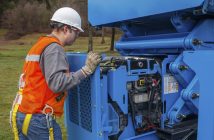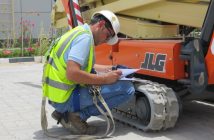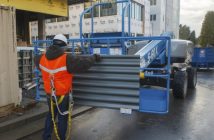Konecranes has completed a Major Assessment of a production-critical crane used in WesTrac’s Newman, WA workshop, which has saved the company downtime and cost, as well as enhanced safety and productivity for ongoing use

The 40t double-girder crane is used to lift components for WesTrac’s repairs on their customers’ dozers, graders and loaders, such as power train overhaul, where it lifts components like engines, pump drives, torque converter transmissions and final drives.
As the world’s leading crane organisation, with over 600,000 pieces of lifting equipment of all makes and models under service contract, Konecranes regularly performs Major Assessments on cranes and lifting equipment, to assess their current condition, estimate remaining design life, and ensure Standards compliance, including AS2550.1 2011 Section 9.
The assessment looks at structures, mechanical components and electrical systems, and highlights possible maintenance, modernisation or upgrade needs.
“The service from Konecranes was first class. The technicians were organised and professional. And most importantly to our operations, they caused minimal disruptions by completing all their work on the crane within the day,” says Clint Dallow – WesTrac Branch Manager – Newman.
WesTrac, which employs more than 2,700 people in Australia, provides industry-leading equipment management to the mining, construction and transport industries and is one of the largest authorised Caterpillar dealers in the world.
“We’ve been using this crane for around 20 years now, but its usage can vary from being used intensely one week to not at all the next,” Dallow explains.
“Konecranes understood our individual needs and made recommendations accordingly.”
Konecranes recommended two immediate upgrades for WesTrac’s crane.
The first was a Konecranes ControlPro datalogger, which allows all relevant data about the crane’s usage to be collected, so that next time maintenance is needed, the technicians know exactly where to target, rather than having to take the entire crane down and look at each component individually.
“The datalogger will give us a huge advantage for future maintenance programmes,” Dallow believes.
“If we can save time by only performing maintenance where it’s actually needed, that helps our productivity and overall operations.”
The second upgrade was to install a load display, which is a digital screen that shows exactly how much the crane is lifting.
“The load display is great for the safety of my team,” Dallow says.
It makes sure they’re always lifting within the safe working limits of the crane.”
Konecranes’ internal sales representative responsible for the project, Jeevan Pattian, was delighted to be able to provide the customer with the most efficient service possible.
“This Major Assessment was done as part of a compulsory 10-year inspection of the entire building, but there are other reasons why an assessment may be undertaken to benefit businesses like WesTrac.
“If you’re not sure if your cranes are capable of meeting growing production demands, or if you’re using your crane for purposes other than the originally classified purpose, for example.
If you aren’t sure if it’s time to modernise, or are concerned that new safety issues have arisen since a crane was first installed, a Major Assessment can give you all the relevant information, and a Konecranes expert can sit down and explain the possible courses of action,” Pattian explains.
The major assessment process
- A team of Konecranes specialists observes the production and operating environment of the crane
- The overall condition of the crane structures and components is evaluated in detail with a focus on safety, productivity, reliability, usability and remaining design life
- Operators and maintenance personnel are interviewed, and all pertinent documentation is reviewed
- The team provides a detailed report and further consultation with advice on maintenance, modernisations and future investments.




